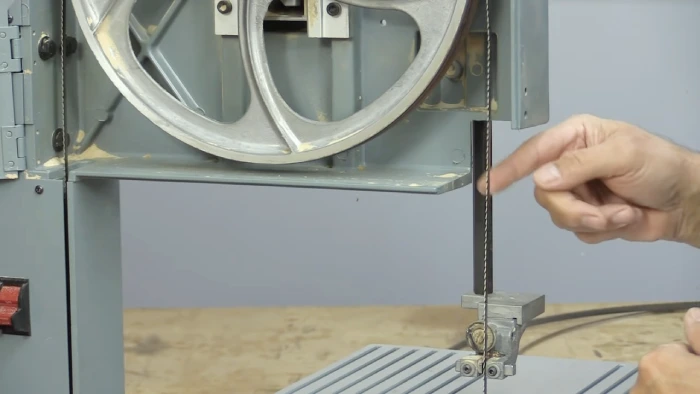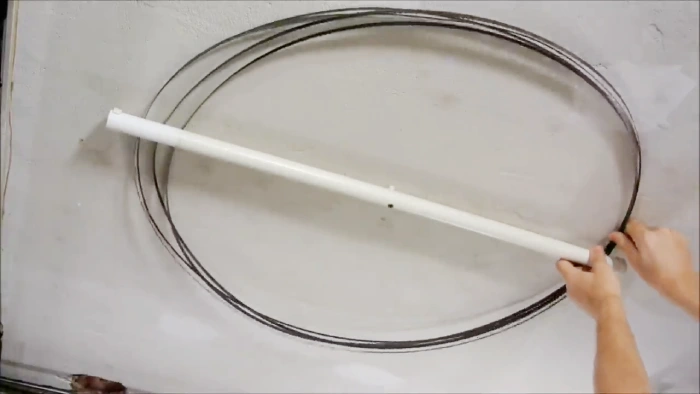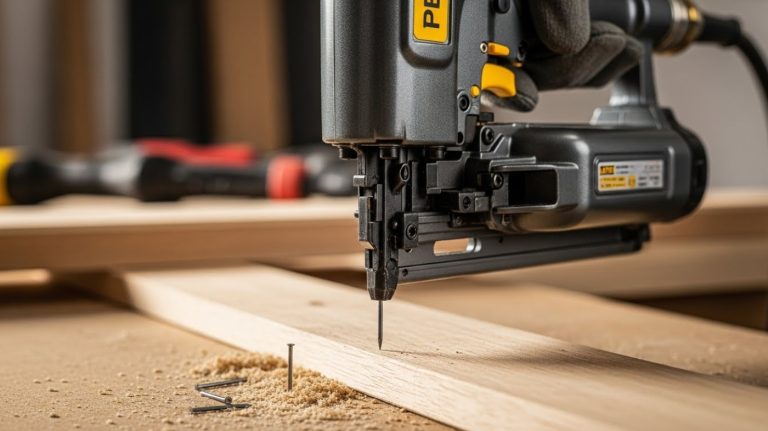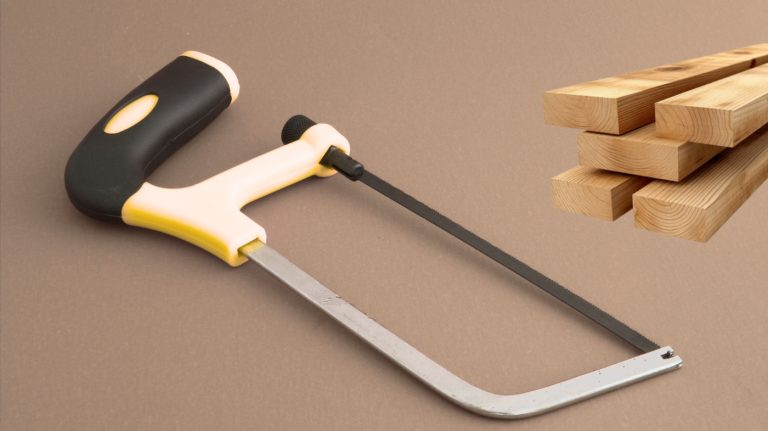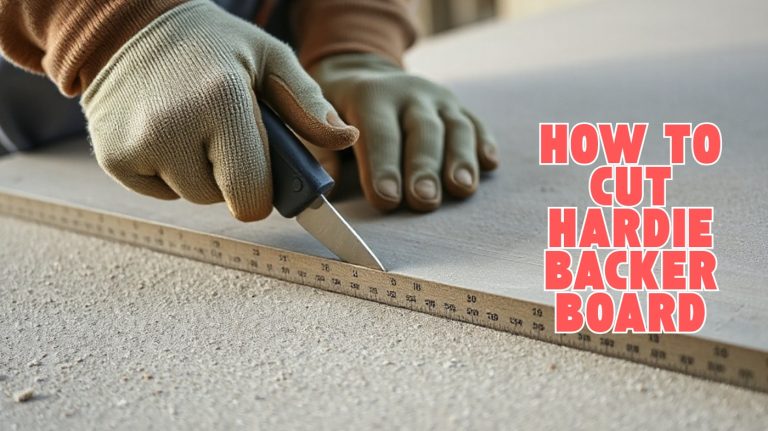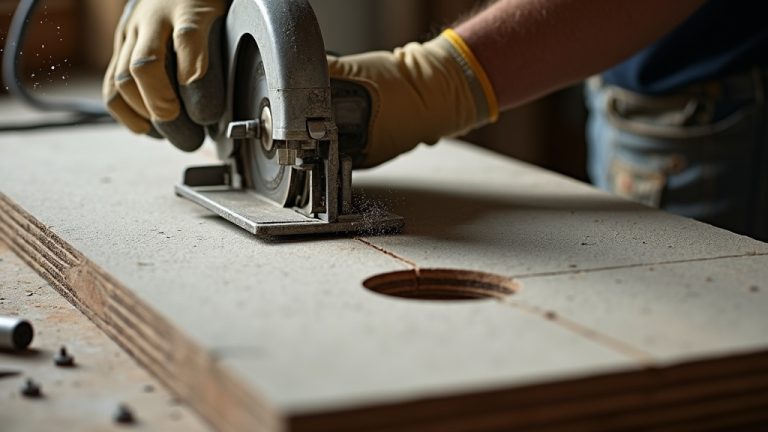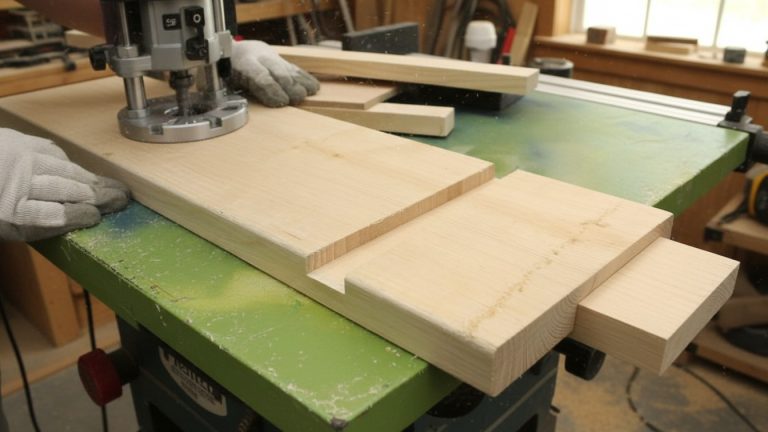How to Fix Your Band Saw Blade From Wobbling: 8 Steps
Precision and consistency are paramount in woodworking, particularly when crafting intricate designs or replicating identical pieces. One common challenge woodworkers face is the potential wobbling of bandsaw blades, disrupting the smoothness of cuts and compromising the desired precision.
Based on my research, you can address the issue by inspecting and cleaning the blade. Align the thrust bearings and guide blocks. Test the wheel rotation and perform dynamic testing. And make any necessary tension adjustments.
In this discussion, I will discuss the step-by-step process to fix a bandsaw blade from wobbling and the importance of inspecting and aligning various components. So, let’s dive into the world of woodworking band saws and discover the secrets to eliminating that pesky wobble, ensuring your projects are flawlessly executed.
How to Fix Your Band Saw Blade From Wobbling: Follow the Steps
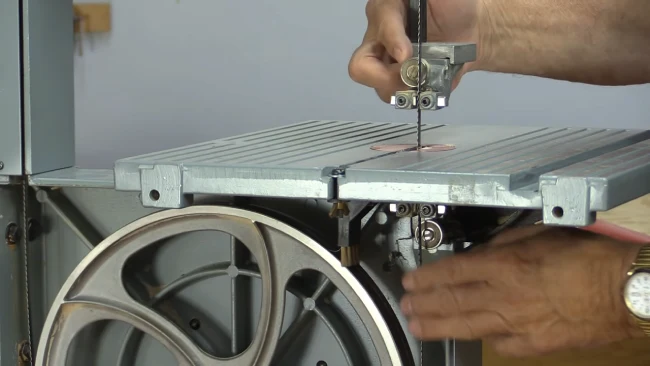
I know that wood-cutting bandsaw blades can wobble based on various factors, such as loose components or dull blades. Here I listed the tips on what to check and how to fix these issues.
- Blade inspection and cleaning
- Thrust bearings and guide block alignment
- Wheel rotation test
- Dynamic testing
- Tension adjustment
- Blade position on wheels
- Weld inspection
- Consideration of machine components
Step 1. Blade Inspection and Cleaning
To keep your woodworking bandsaw blade from wobbling, begin by turning off and unplugging the bandsaw for safety.
Carefully inspect the blade for any kinks, bends, or irregularities. Make sure to check both the teeth and the back of the blade. Look for any signs of damage, such as missing or broken teeth.
Additionally, ensure the bandsaw blade is clean from any sawdust or debris that might’ve accumulated during use. A clean and well-maintained blade is crucial for smooth operation. Use a soft brush or compressed air to remove debris from the blade, paying close attention to the gullets between the teeth.
This thorough inspection and cleaning will help identify issues and ensure optimal performance.
Step 2. Thrust Bearings and Guide Blocks Alignment
New examine the alignment and wear of the thrust bearings and guide blocks. The thrust bearings and guide blocks are crucial in stabilizing the blade and preventing wobbling. Check for any misalignment or excessive wear in these components.
Misalignment can occur due to regular use or improper maintenance, while wear can happen over time. If you notice any issues, adjusting or replacing these components following the manufacturer’s guidelines is essential.
Properly functioning thrust bearings and guide blocks are necessary for maintaining blade stability and ensuring precise cuts.
Step 3. Wheel Rotation Test
Further, detect variations or irregularities in your woodworking band saw blade and rotate the upper wheel by hand. This manual rotation allows you to identify issues with the wheel’s alignment or balance.
Start by turning the wheel slowly and carefully observe its movement. If you notice any resistance, grinding, or uneven rotation, it indicates a problem that needs further investigation and adjustment.
These issues can negatively affect the performance and accuracy of your band saw. To fix the wobbling here, you may need to adjust the wheel’s position, tighten or loosen the set screws, or replace any damaged or worn-out components.
Step 4. Dynamic Testing
Now that you have completed the wheel rotation test and identified any issues with the alignment or balance, you must move on to the next step: dynamic testing.
To perform dynamic testing, turn on the bandsaw and observe the blade while running. Pay close attention to any side-to-side wobbling or deviations from a straight path. This step is crucial because it allows you to identify issues that may only manifest during operation.
If you notice any wobbling or deviations, it indicates that there’s still a problem with your blade. In such cases, you’ll need to proceed to the next steps for further troubleshooting.
Step 5. Tension Adjustment
Adjust the tension on your woodworking band saw blade to fix any wobbling issues. Vary the tension while the bandsaw runs to see its impact on wobbling.
Start by backing off the tension until you notice a slight wobble. Then, gradually tighten the tension incrementally. Experiment with different tension levels to find the optimal setting for your specific blade and cutting requirements.
This step is crucial as incorrect tension can cause the blade to wander and lead to inaccurate cuts. Remember that different blades may require different tension levels, so adjusting accordingly is important.
Step 6. Blade Position on Wheels
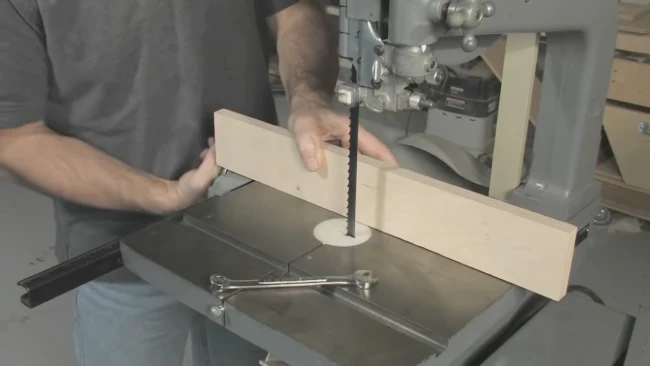
After adjusting the band saw blade tension, the next step to fix any wobbling issues is to check the blade’s position on the wheels.
Start using any available tilt adjustment mechanisms to ensure the blade is properly seated on the wheels. It’s important to align the blade according to the manufacturer’s specifications. Misalignment can cause wobbling during operation, affecting the accuracy of your cuts.
Take the time to carefully inspect the blade’s positioning and make any necessary adjustments. This may involve loosening the blade and repositioning it on the wheels for proper alignment.
Step 7. Weld Inspection
Now, look closely at the weld and pay attention to any front-to-back kinks. If you notice any irregularities, mark the weld with paint and observe if the wobbling is specifically localized to the marked area. This will help you identify any potential issues with the weld.
If necessary, consider trying a different blade to eliminate the possibility of a defective weld. Remember, a smooth and consistent weld is crucial for a properly functioning band saw blade.
Step 8. Consideration of Machine Components
Finally, inspecting other critical machine components is the next step in fixing your woodworking band saw blade from wobbling. Look closely at the top wheel and check for any signs of damage or misalignment.
The top wheel plays a crucial role in maintaining the stability and smooth operation of the band saw blade. Any problems with this component can lead to wobbling and affect the overall performance of your woodworking band saw.
If everything is fine, I believe your blade will not wobble after completing these steps. But if the issue persists, it might be time to call a professional for further assistance.
Why does my bandsaw blade keep jumping?
If your bandsaw blade keeps jumping, I think it could be due to a lack of straightness in either the blade or the weld. A blade that isn’t straight can cause it to bounce and jump while cutting. Sometimes, the weld that joins the blade may not be straight, contributing to the jumping.
To fix this issue, replace the blade with a new one that’s straight and has a properly welded joint.
Another reason for the blade jumping could be inadequate tension. The blade tension should be high enough to keep the blade in place and minimize bounce. If the tension is too low, the blade can easily jump and cause inaccurate cuts.
Why does my bandsaw blade keep twisting?
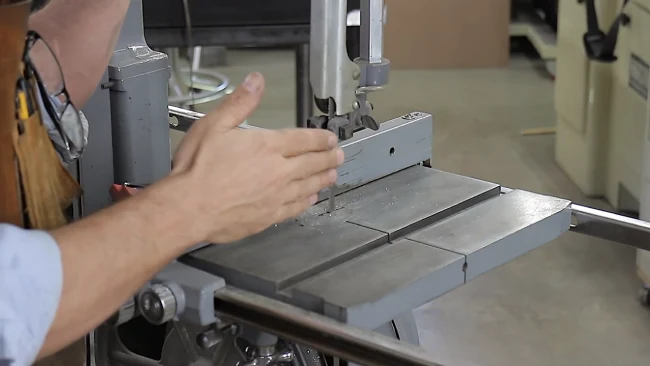
The bandsaw blade may twist due to excessive feed force or the wrong blade width when cutting radiuses. Feeding the material into the blade too forcefully can cause the bandsaw blade to bind and twist during the cut. I recommend maintaining a steady and controlled feed rate to prevent excessive force on the blade.
It’s also worth checking the blade’s tension, as over or under-tension can cause twisting as well. Ensure that your bandsaw blade is properly tensioned to prevent any unnecessary twisting.
The Troubleshooting of Bandsaw Blade Wobbling
I believe woodworking is an art that demands attention to detail, and a bandsaw plays a crucial role in achieving the desired precision. When confronted with the frustration of blade wobbling, the systematic approach outlined in this guide provides a roadmap for troubleshooting and resolving the issue.
From examining blade components and machine elements to dynamic testing and tension adjustments, these steps empower woodworkers to regain control over their bandsaw’s performance. You can enhance your woodworking accuracy and finesse by mastering the techniques presented on this page.

